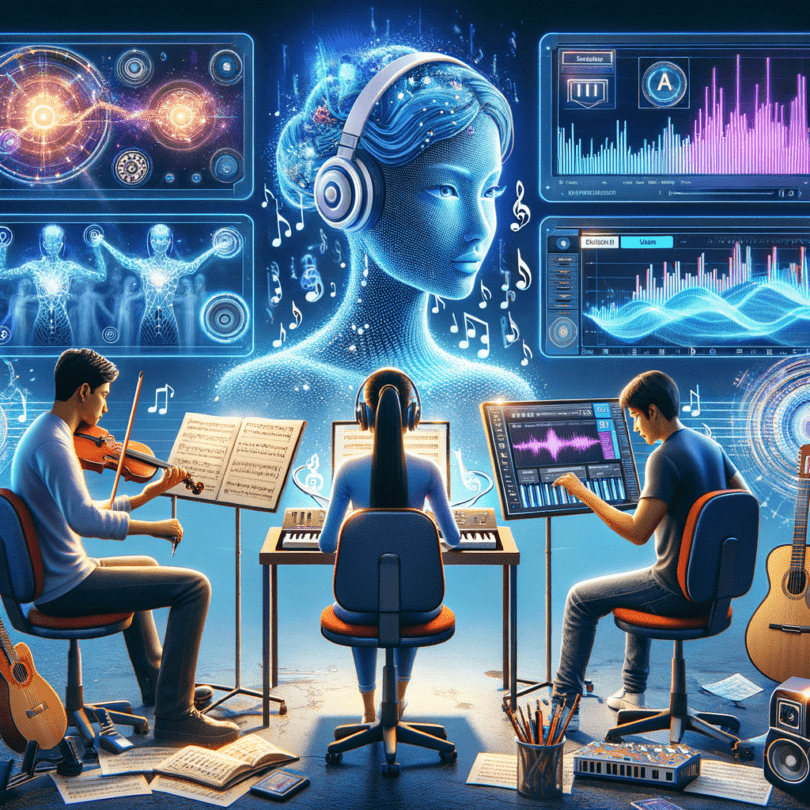Every fall, when I kick off my course about music and artificial intelligence, I like to start with a question: “Are you worried about AI’s involvement in creating music?” It’s a question that never fails to get a unanimous “yes” from my students. They’re mostly worried that AI will flood the world with music, leaving human musicians out in the cold.
This semester, I’m gearing up for a conversation about an intriguing development. Paul McCartney recently shared how he and a team of engineers used machine learning to isolate a “lost” John Lennon vocal from a demo recording, essentially bringing part of a musical legend back to life. But this isn’t an isolated case; it’s just scratching the surface of what’s being done in the world of AI and music.
McCartney described AI in music as both “scary” and “exciting,” which I think sums it up perfectly. Let’s dive into three ways AI is reshaping music creation, threatening the space human musicians have traditionally occupied.
First up, AI programs can generate entire songs from a simple text prompt. Tell it to make some “Electronic Dance with a Warehouse Groove,” and boom, it spits out tunes. These AI models—trained on vast libraries of existing music—learn the nuts and bolts of music, everything from structure to harmony, and produce new stuff that echoes what’s in the database.
Apps like Boomy allow anyone, even nonmusicians, to churn out music and upload it to platforms like Spotify to make a buck. Spotify even pulled down a lot of these AI tracks at one point, claiming they were stepping in to safeguard artists’ rights and royalties. They later worked it out with Boomy, but the problem remains. These apps can blur the lines of copyright by creating music that’s eerily similar to what’s already been published.
Streaming services, with their bottom-line focus, might see an opportunity here. Right now, Spotify pays artists 70% of what they make from streams. If AI could do the creating, it could eliminate the need for human musicians altogether, potentially keeping more revenue for itself.
Secondly, AI assists mastering and mixing tracks, essentially the cleanup crew for audio. Apps like Landr and iZotope’s Neutron can automatically perfect a song’s audio quality. For musicians lacking in technical skills or cash, these tools polish tracks to a professional sheen without the need to hire an audio engineer. This technology is a double-edged sword, though. While useful, it could take jobs from professionals who actually mix and master tracks. Although, it might free these pros to pursue bigger projects.
Finally, AI’s reach extends to mimicry. Using “tone transfer” technology, it can transform one instrument’s sound to resemble another’s. This was illustrated when Yaboi Hanoi won the AI Song Contest in 2022 with a song that skillfully blended Thai myth and indigenous instruments. The contest highlighted how AI can replicate a traditional Thai woodwind—the pi nai—and infuse it into songs.
This tech isn’t just limited to instruments. Vocaloid software allows users to create human-like voices, which, though innovative, raises concerns about authenticity and originality, especially when considering cultural sensitivity and potential misuse in scams or unethical practices.
While I celebrate Yaboi Hanoi’s creative use of AI, it’s worth considering whether it might also encourage superficial cultural connections by using AI. You’ve got examples like Capitol Music Group’s attempt to market an “AI rapper,” which was called out for cultural insensitivity. With vast datasets like the “Million Song Dataset” feeding these apps, the risk of unintentionally stepping over cultural boundaries is real.
In my class, these are the discussions we delve into—helping students to navigate the complexities of AI in music creation wisely. As the semester wraps up and I revisit the initial question, many students, brimming with newfound knowledge, admit that while AI’s future in music has its dark sides, they’re mostly eager to see where it will lead. If we’re careful, there’s room for optimism amidst the caution.

